Josh's Frogs
WANEE Vietnam: Ba Den Mountain Amphibian Surveys
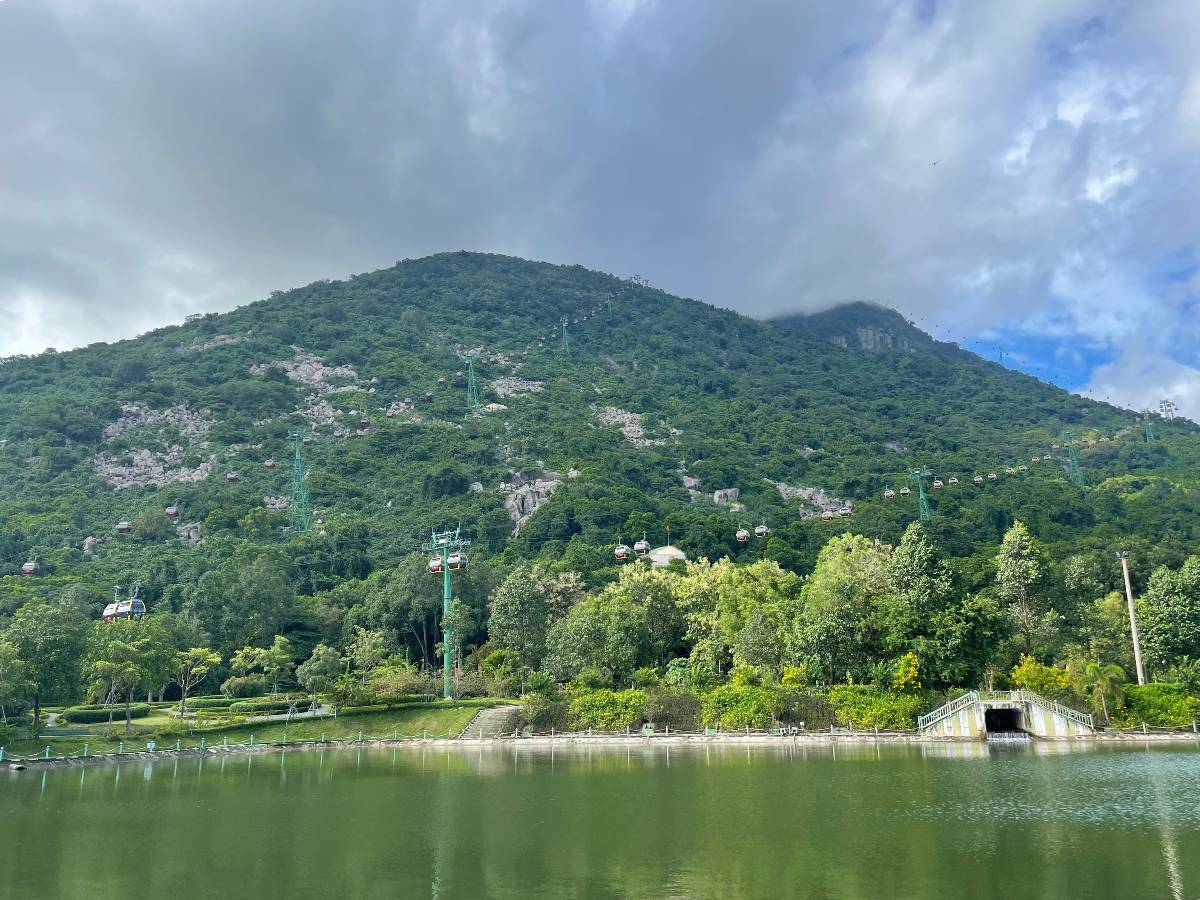
This September 2023 photo shows Ba Den Mountain, cloud cover at the summit, and the cable cars leading up to it. Photo credit: WANEE Vietnam
WANEE Vietnam won a Josh's Frogs 2023 Amphibian Conservation Grant for their project, New Amphibian Species in an Imperiled Ecosystem on Ba Den Mountain. We interviewed their lead researcher, Thinh Tran, to learn more about this project.
How do you plan to use the grant money?
This grant will be used to fund herpetological surveys of Ba Den Mountain, which is located in southern Vietnam (northwest of Ho Chi Minh City and close to the border with Cambodia). Ba Den Mountain is an island of biodiversity, a granite massif covered with lush monsoonal forests that tower up to 3,200 feet above the surrounding agricultural lands.
Unfortunately, Ba Den is not well protected and is under threat from tourism and the commercial exploitation of natural resources. A new tourist complex under construction near the summit has already diminished the habitat available to amphibians on the mountain.
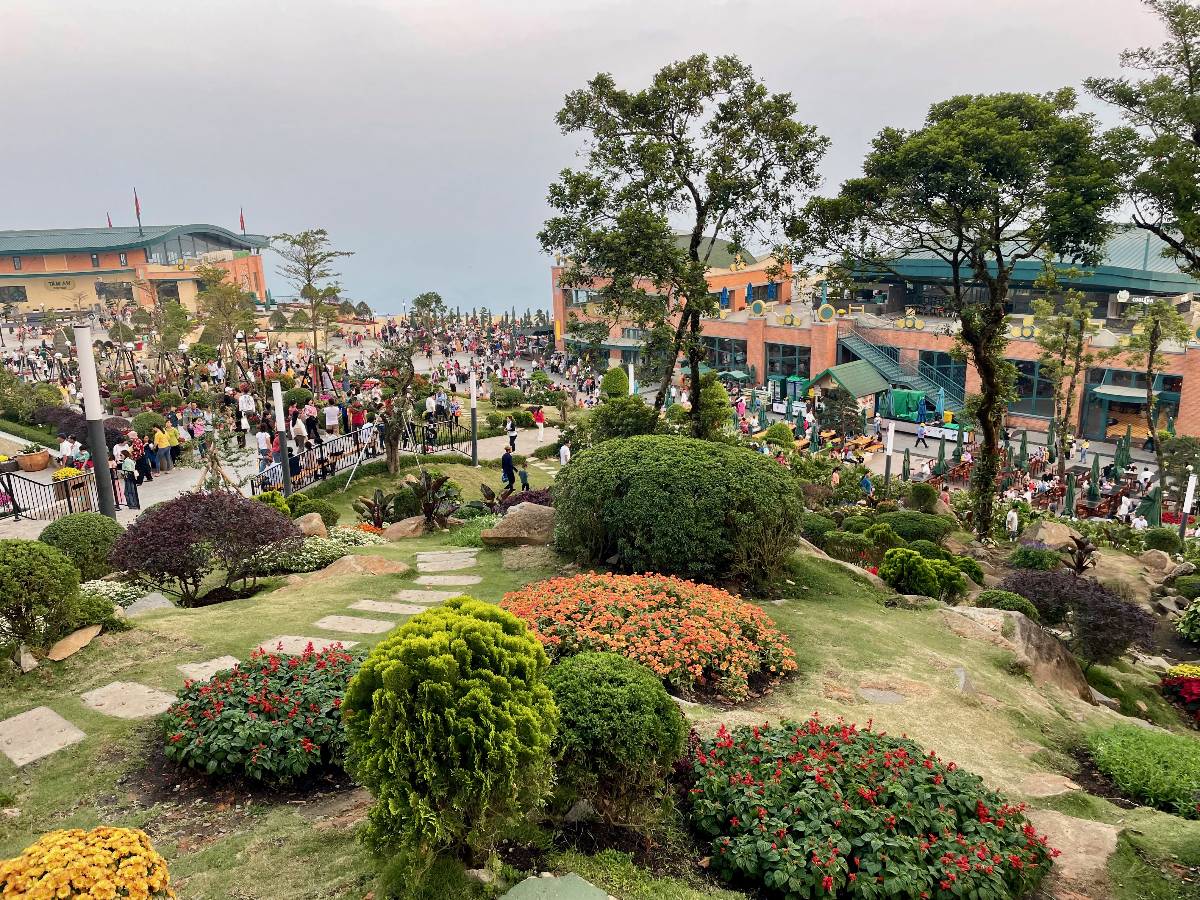
The existing tourist infrastructure on top of the mountain, and the crowds that flock there. This area is being expanded with new construction. Photo credit: WANEE Vietnam
Past scientific exploration on the mountain has revealed a range of endemic reptiles, including three geckos and one skink. However, the amphibian population of Ba Den has not been as well studied. Recent surveys by our team have uncovered the existence of frilled tree frogs (Kurixalus), stream frogs (Sylvirana), and bug-eyed frogs (Theloderma). These groups have not previously been documented on the mountain. The frilled tree frog (Kurixalus) finding is particularly interesting, as it is quite possibly a new species, with the nearest close relatives living hundreds of miles away in Vietnam’s Central Highlands. The fact that Ba Den is already known as a hotspot for endemism makes this all the more interesting. As part of our surveys, we will attempt to find, photograph, and collect more specimens so that we can fully describe this potentially new species of frog. We have only photographed three so far, of which only two were successfully collected. We also understand very little about this frog’s life history, and our surveys will help to fill those gaps.
In total, we are hoping to conduct four surveys. Each trip will last four days, with a focus on the cooler, moister forests around the summit of the mountain (the area with the greatest diversity of amphibians). Each survey will transect the mountain from top to bottom, covering a range of habitats, including streams, forests, boulder fields, and caves. Each survey team will have four members: three scientists and one forest ranger. Two surveys will be conducted during the January-to-May dry season and two will take place during the May-to-October wet season.
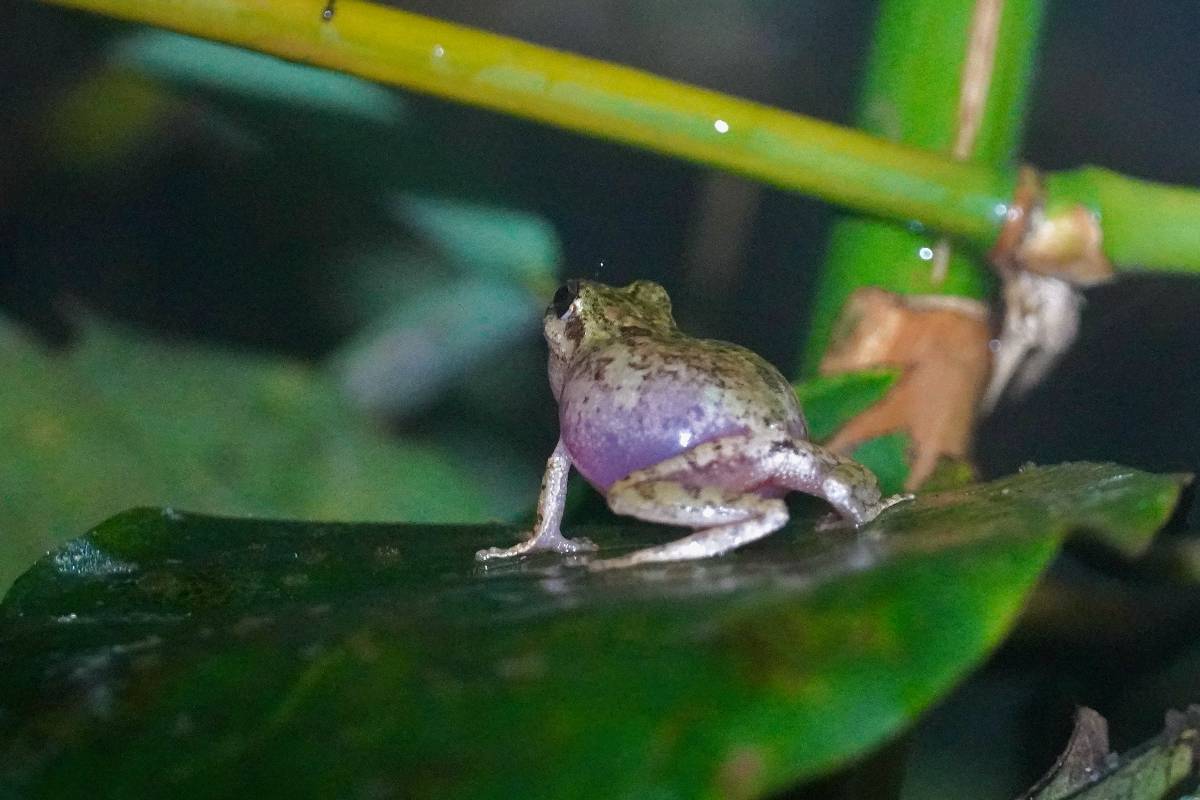
In-situ photo of an unidentified and potentially new species of frilled tree frog (Kurixalus). The frog is calling. Taken on Ba Den Mountain in April 2023. Photo credit: WANEE Vietnam
Grant funding will also support DNA analyses of specimens collected during our surveys. We are hoping to obtain at least 10 specimens of new or otherwise noteworthy species. DNA analysis will allow us to identify these amphibians conclusively.
Finally, once the survey work has been finished, we intend to run a localized public awareness campaign, creating educational posters on amphibian biodiversity on the mountain. These posters will be displayed in areas where visitors to Ba Den and staff at the tourist complex on the summit can easily view them. They will serve to highlight the ecological importance of amphibians in the area.
What does winning this grant allow you to do that you might not have otherwise?
Despite ongoing, rapid development of tourism in the region, very little scientific work is being conducted on Ba Den to evaluate its biodiversity and conservation needs. Our recent trips there were single-day “herping” expeditions that we organized for a local wildlife photographer. While valuable in terms of revealing the need for further study, these trips were short and limited in scope. Funding from this grant will allow us to conduct the field and laboratory work still needed to achieve a more comprehensive understanding of this mountain’s ecology. As development on the mountain continues, our window of opportunity is rapidly shrinking. It is vital that we act soon before it is too late.
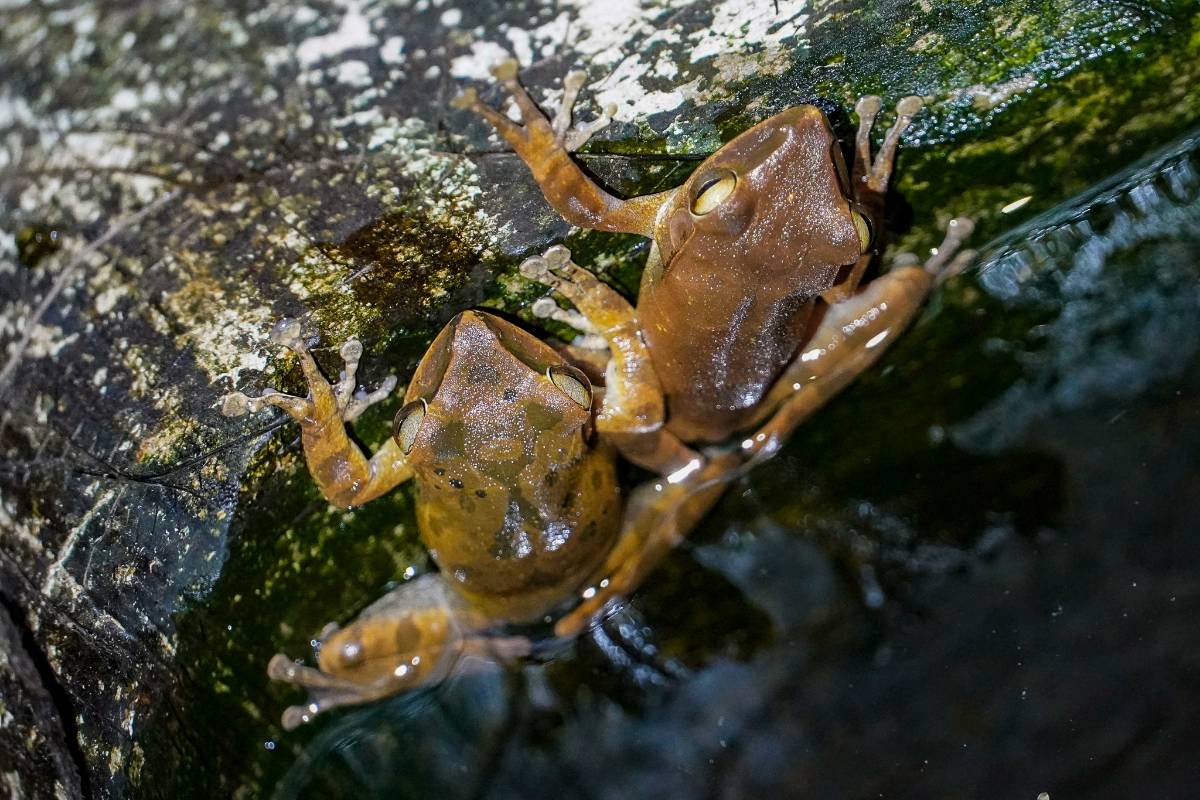
Brown tree frogs (Polypedates) observed in April 2023 in a breeding pool that has since been destroyed by construction. Photo credit: WANEE Vietnam
When do you expect to see results from this? What are you hoping they look like?
During each survey, we expect to collect 25-75 observations of amphibians living on Ba Den Mountain. We will be primarily documenting these frogs with photography and GPS locations, along with notes on their habitat and other relevant details. This initial data will be available shortly after each survey.
We are also hoping to collect specimens of certain species, especially the potentially new frilled tree frog (Kurixalus). We will submit samples of these to a local laboratory so that we can analyze the DNA. While this process will take more time, the results should be available by fall 2024.
Once we have all the data, we will produce a report describing the species identified during the surveys, including information on their conservation status and threats to their survival. We hope to publish this report in an academic journal (and will also make it available to Josh’s Frogs and their customers).
Finally, we will produce posters highlighting the amphibian diversity on Ba Den. These posters will be displayed in public areas at the foot of the mountain and at the summit where visitors and staff can easily view them. Educational posters of this kind do not currently exist anywhere on or near Ba Den Mountain.
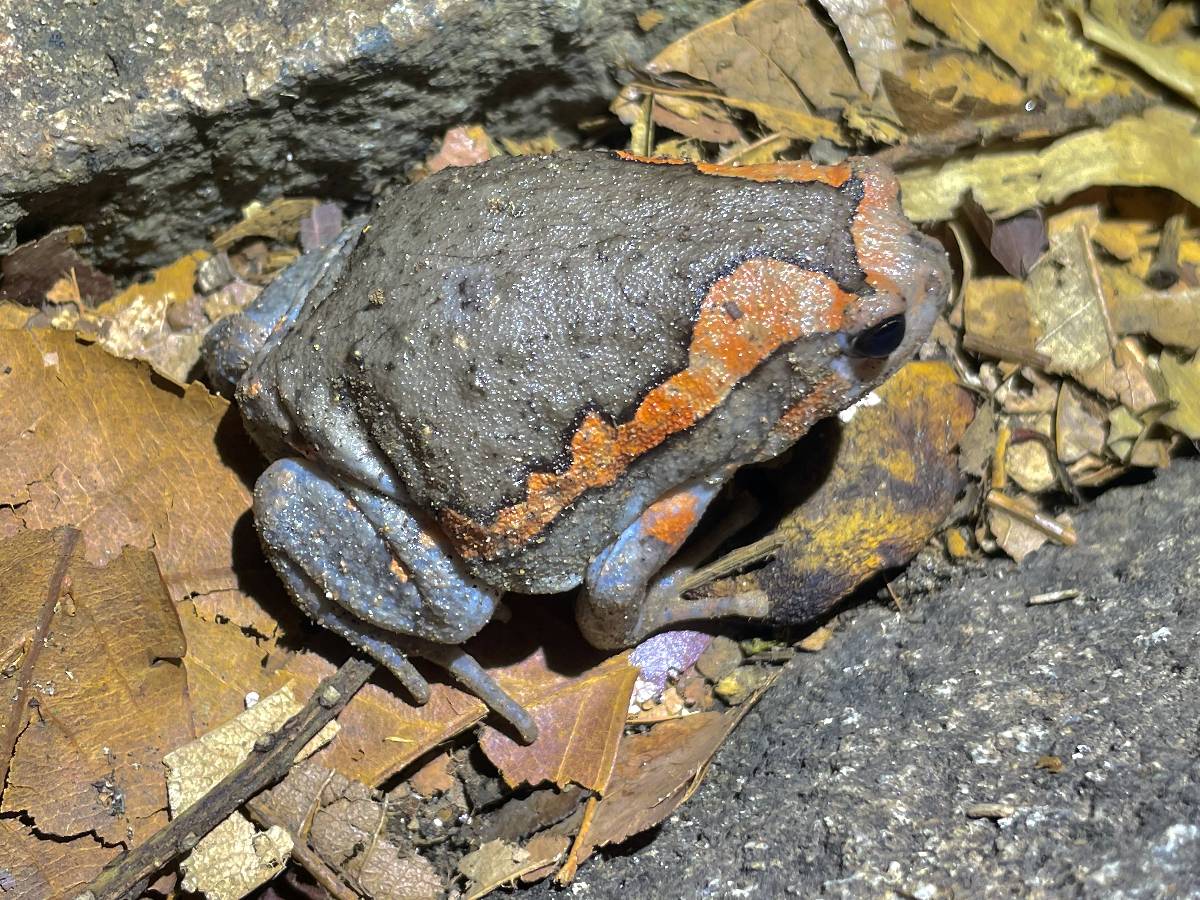
A Kaloula pulchra on Ba Den Mountain. These frogs, which go by the common name Asian Painted Frogs, are common on Ba Den. Photo credit: WANEE Vietnam
How will this impact amphibian conservation specific to this instance?
Our long-term hope is that greater public awareness of the biodiversity on the mountain will strengthen the argument for conservation with local stakeholders and decisionmakers, including the provincial government and private companies involved in tourism and resource extraction. Amphibians are an important part of this mountain’s biodiversity, especially if we can document the existence of endemic or threatened frog species.
What are the larger implications of your work?
The report that we produce at the conclusion of our survey will be used as a resource by a wide range of herpetologists and other scientists working in Vietnam and Southeast Asia. Our report will highlight the critical importance of the isolated mountains that dot the agricultural lands of southern Vietnam. These mountains are understudied compared to neighboring ecosystems (such as the Central Highlands and Cat Tien National Park), but it is already clear that they host a range of endemic and rare species. Unfortunately, these mountains are also frequently targeted for resource extraction and tourism development, underscoring the urgent need for further study and conservation.
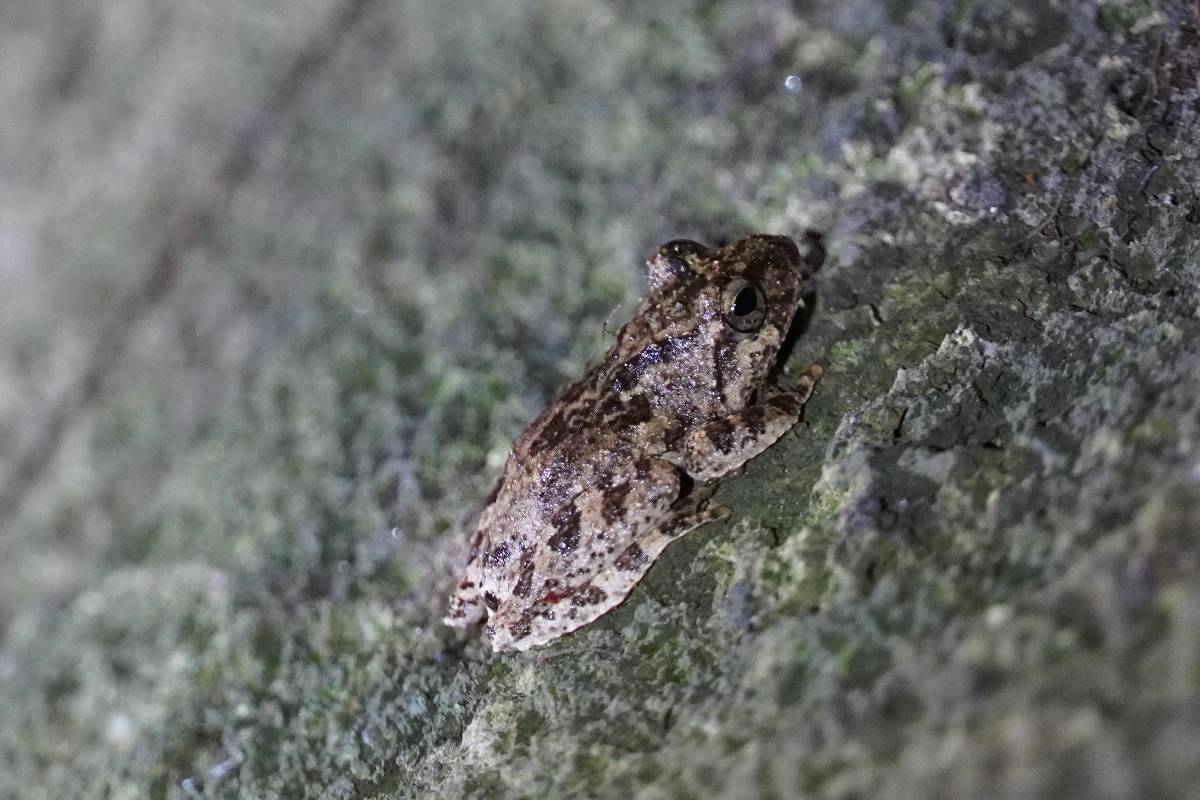
"This was the first frilled tree frog (Kurixalus) we found on Ba Den – in a cave possibly sheltering from heat and dry conditions during the dry season in February 2023. The area is surrounded by construction." - Photo & quote credit: WANEE Vietnam
What message or information would you like to share with the reptile and amphibian pet community?
Vietnam is not yet well known for its herpetological fauna, in particular the diversity of amphibians that live here. It is nonetheless home to an impressive number of frogs, caecilians, and even salamanders. There are at least 288 known species, of which at least 90 are endemic. At least 90 of those 288 species are also currently threatened under IUCN standards. In addition to funding this project, we would also like to encourage travelers to come to Vietnam to experience the incredible wildlife here firsthand. Nothing beats finding a rare and beautiful frog on a misty mountaintop during a nighttime herping trip. By supporting ecotourism in Vietnam, you are encouraging public education and conservation efforts to protect our valuable resources.
How would someone make a donation to your organization?
Our organization, WANEE Vietnam, specializes in environmental education, including herping, birding, wildlife photography, hiking, camping, and more. We maintain a staff including three professional herpetologists. We would love to host you in Vietnam and can arrange herpetological programs for you throughout the country. Please see our website (https://wanee.asia/) for more details. Additionally, if you would like to make a direct donation, to be used for scientific surveys or other conservation-focused projects in Vietnam, funds can be sent to:
WANEE Vietnam Company Limited
C/O Mr. Nguyen Van Thang
1457 Nguyen Duy Trinh St
Truong Thanh Ward
Thu Duc City
Ho Chi Minh City, Vietnam
Donations are greatly appreciated.
Where could someone learn more about your project?
Our final report on the amphibian biodiversity of Ba Den will be published in a major academic journal. We will also make the report available to Josh’s Frogs and its customers.
Our findings will also be documented on iNaturalist, which is an excellent tool for both professional scientists and citizen scientists. We have created a project on iNaturalist already and all future observations of amphibians on the mountain will appear here:
https://www.inaturalist.org/projects/amphibians-of-ba-den-mountain
Anything else you feel we should know or discuss?
Another detail about this grant project that might be of interest to Josh’s Frogs customers is that Ba Den Mountain actually played an important role in the Vietnam War. The summit area that is currently being developed for tourism was the site of a significant U.S. military installation in the 1960s and 1970s. Several battles were fought on the mountain. You can read more about this history here: https://en.wikipedia.org/wiki/Black_Virgin_Mountain. There is even a song about the role of the mountain during the war that you can listen to: https://www.youtube.com/watch?v=F6R7YntI0dE.
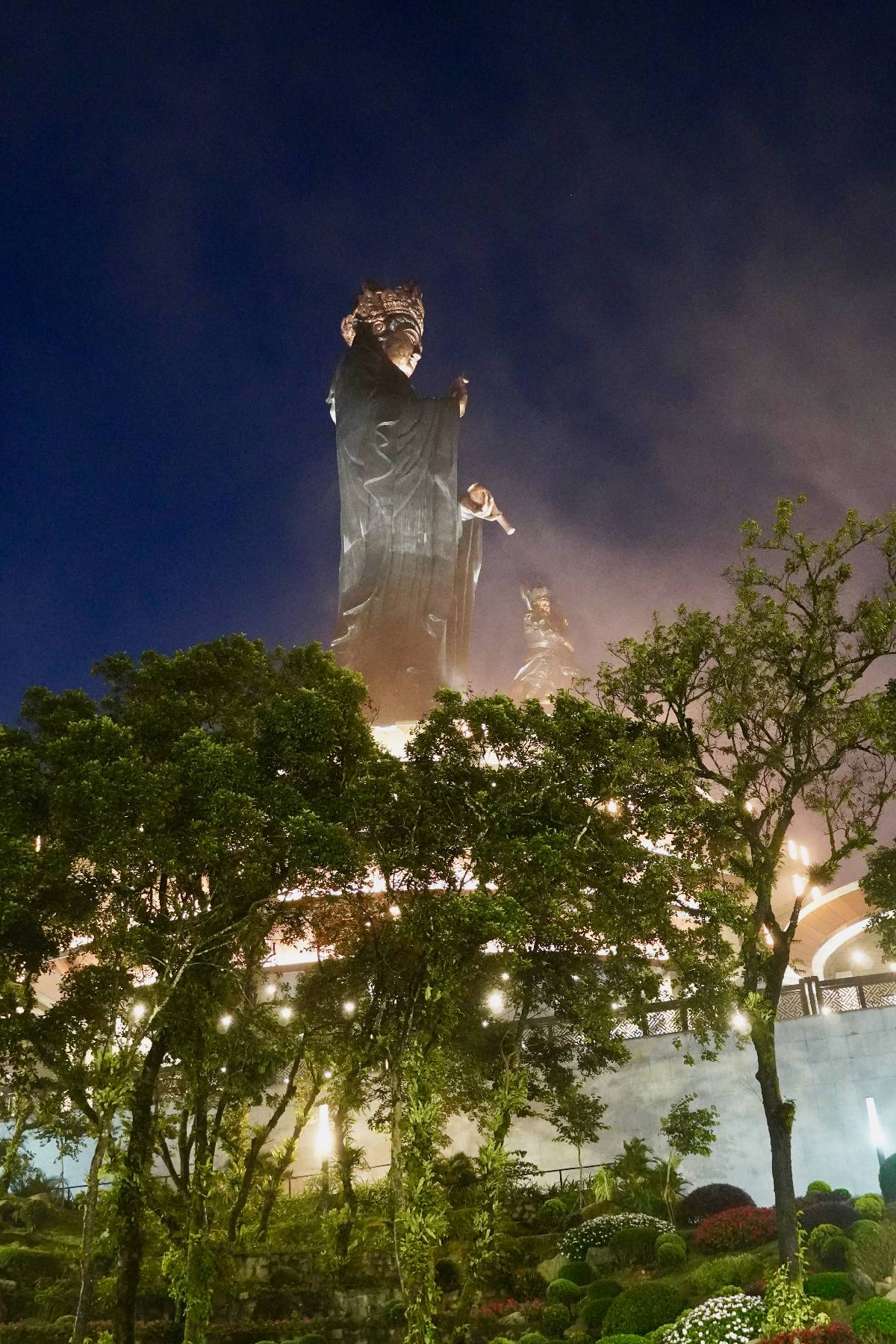
"The new statue on top of Ba Den - note the surrounding mists, which are common at the summit. This image was taken in September 2023 and shows both the tourist infrastructure on the mountain and the cool mists that make its summit in ideal home for amphibians." Photo & quote credit: WANEE Vietnam
